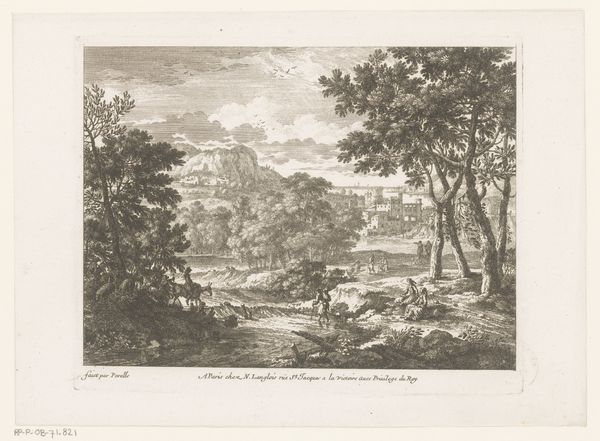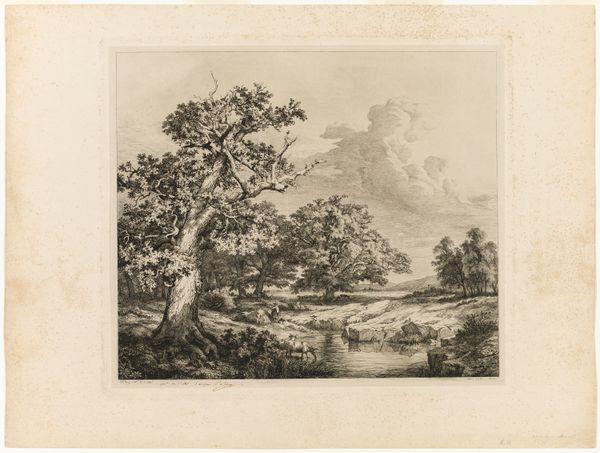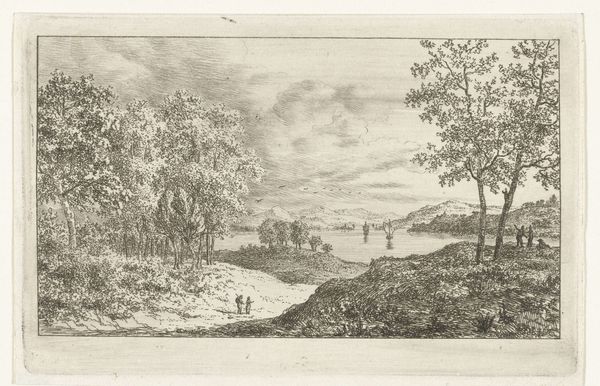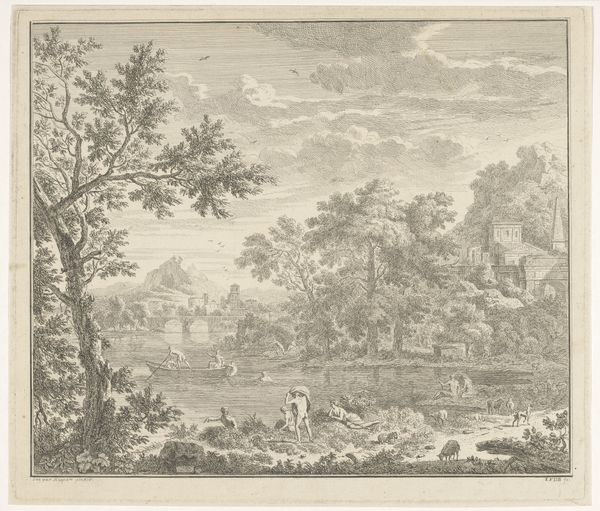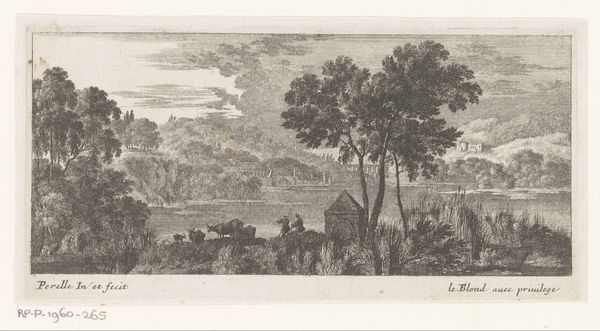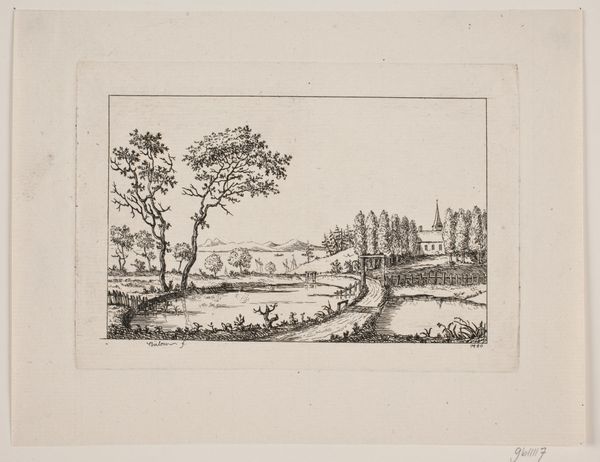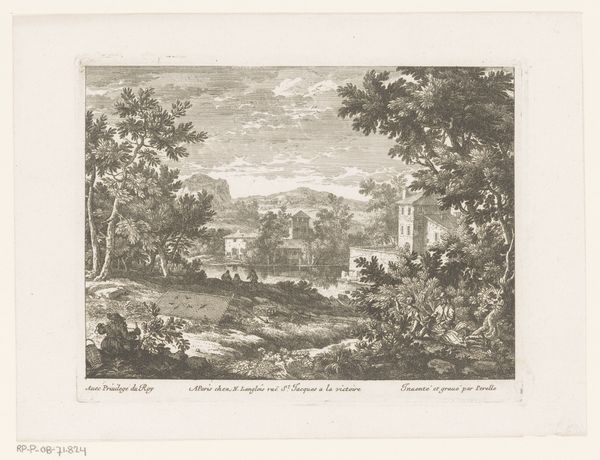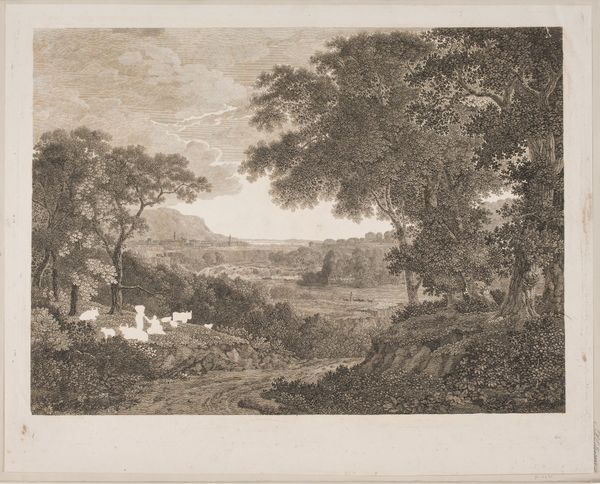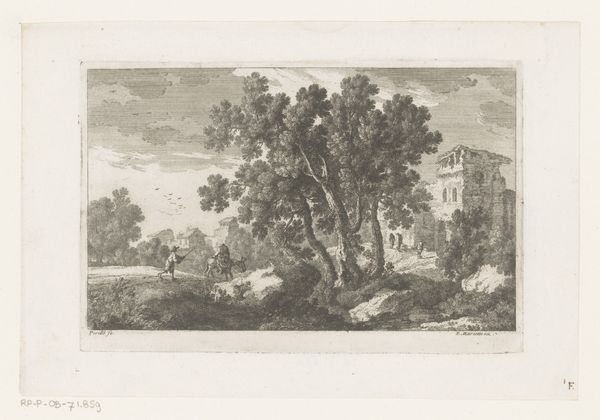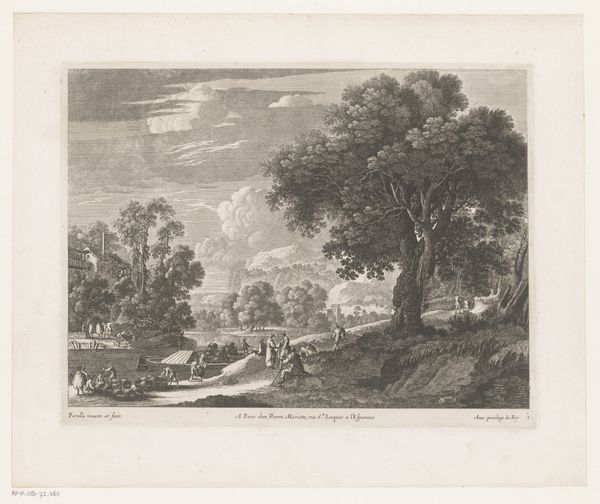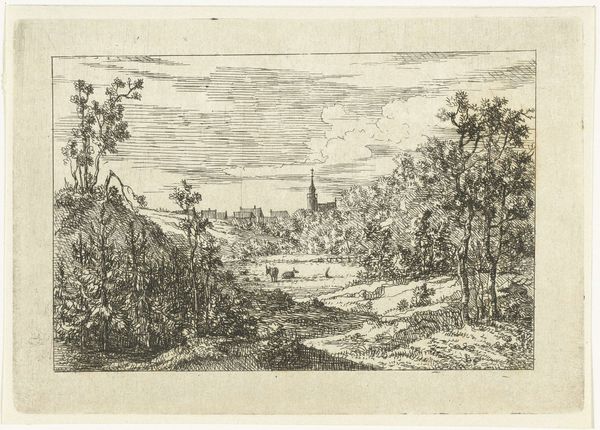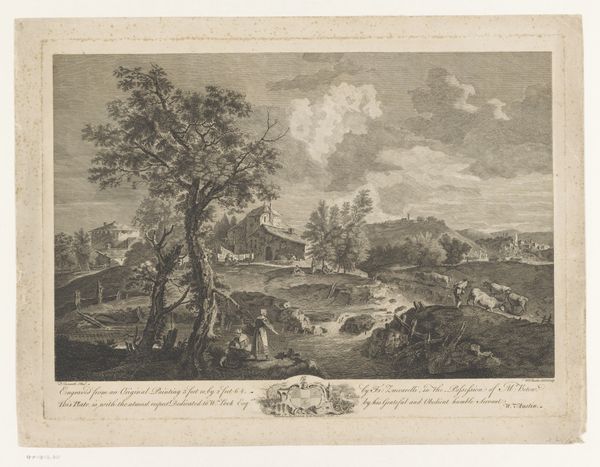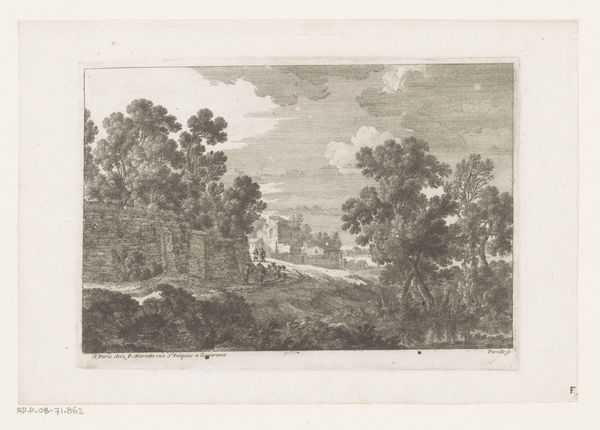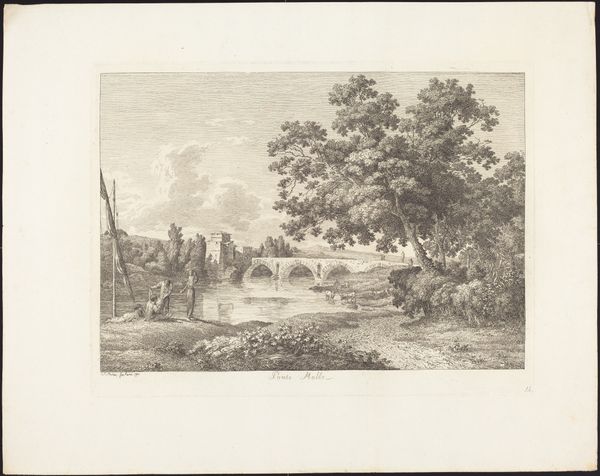
drawing, print, etching, paper
#
drawing
#
venetian-painting
#
baroque
# print
#
etching
#
landscape
#
paper
#
cityscape
Dimensions: 295 × 432 mm (image); 300 × 436 mm (plate); 433 × 587 mm (sheet)
Copyright: Public Domain
Curator: This etching by Canaletto, titled "View of a Town on a River Bank," dates to between 1735 and 1744. Part of a series known as Vedute, this work now resides at The Art Institute of Chicago. Editor: Immediately, I notice the tranquil, almost dreamlike quality, despite it being a fairly realistic depiction. The textures achieved with just lines are astounding. The artist is trying to bring social justice to the lower class with everyday realism. Curator: Indeed. Canaletto's etchings, and this one is no exception, present an intriguing intersection between topographical accuracy and artistic license. He documented Venice meticulously, but in his prints, like here, depicting a town, he took liberties, rearranging elements for a more picturesque scene, what were his choices, who he represents etc. Editor: The lone figures add a sense of scale and humanity. And there's that leaning tree! It introduces this striking, asymmetrical quality to what would otherwise be quite formal. Are the workers, laborers, perhaps highlighting the back breaking labour in those times? Curator: Precisely. That deliberate compositional strategy, with the winding river leading our eye to the town, was part of an artistic marketing to wealthy British tourists of Venice who desired picturesque view and helped fund the art movement and other industries Editor: Right. The picturesque… so much about shaping the view for the privileged consumer. The tree, even bent, romanticized the relationship between the working class and landscape. Do you think Canaletto had this is mind when planning for it or was the product by-product? Curator: That's always the challenge, isn't it, discerning intention versus effect? His views shaped perceptions. His vision became intertwined with Venice's own narrative, reinforcing it within the power structure. Editor: A crucial point. We should remember, art can preserve a time period but also give a voice for freedom from social economic boundaries for a call of diversity. It is our responsibility to make space and highlight this freedom for future generations Curator: Absolutely, the power of Canaletto to invite audiences to reframe historical settings from a pluralist narrative is something to treasure! Editor: Well said! A picturesque end to our viewing.
Comments
No comments
Be the first to comment and join the conversation on the ultimate creative platform.
